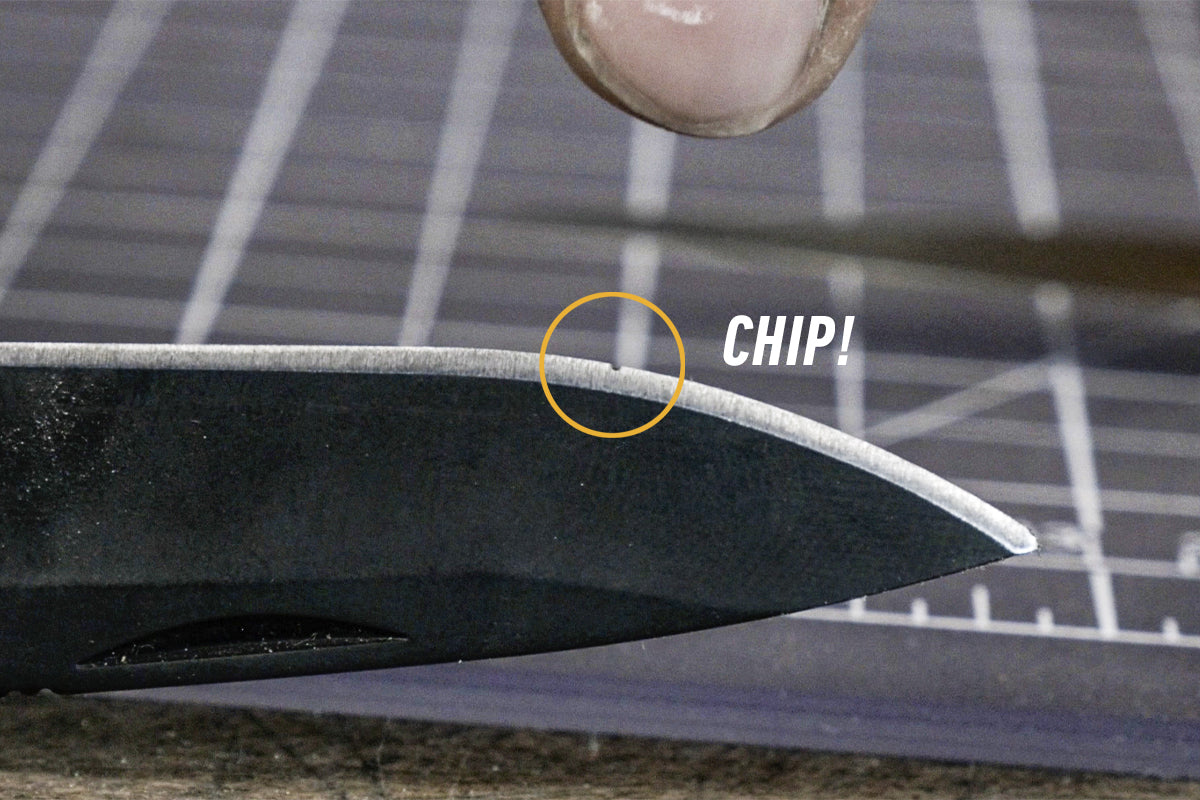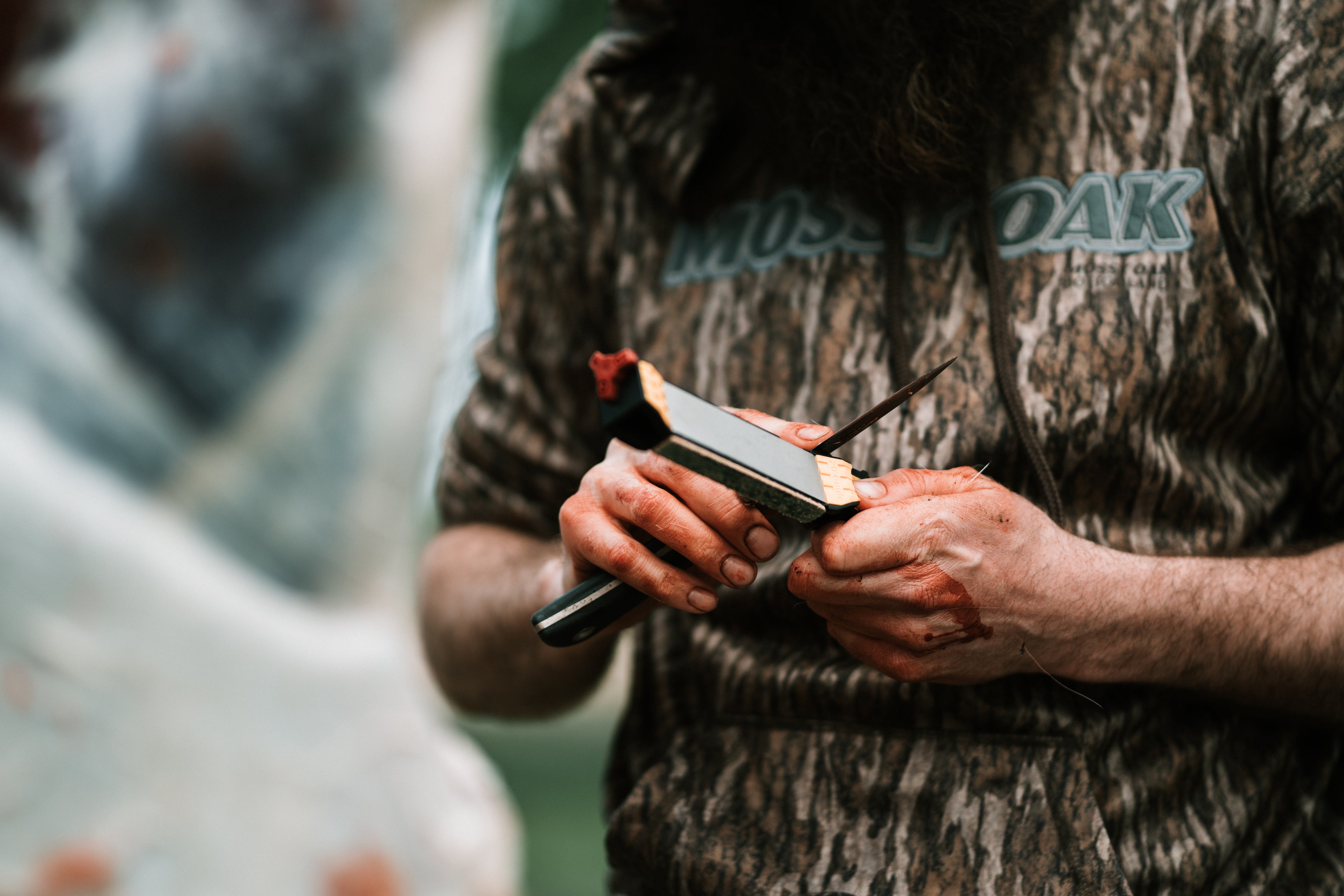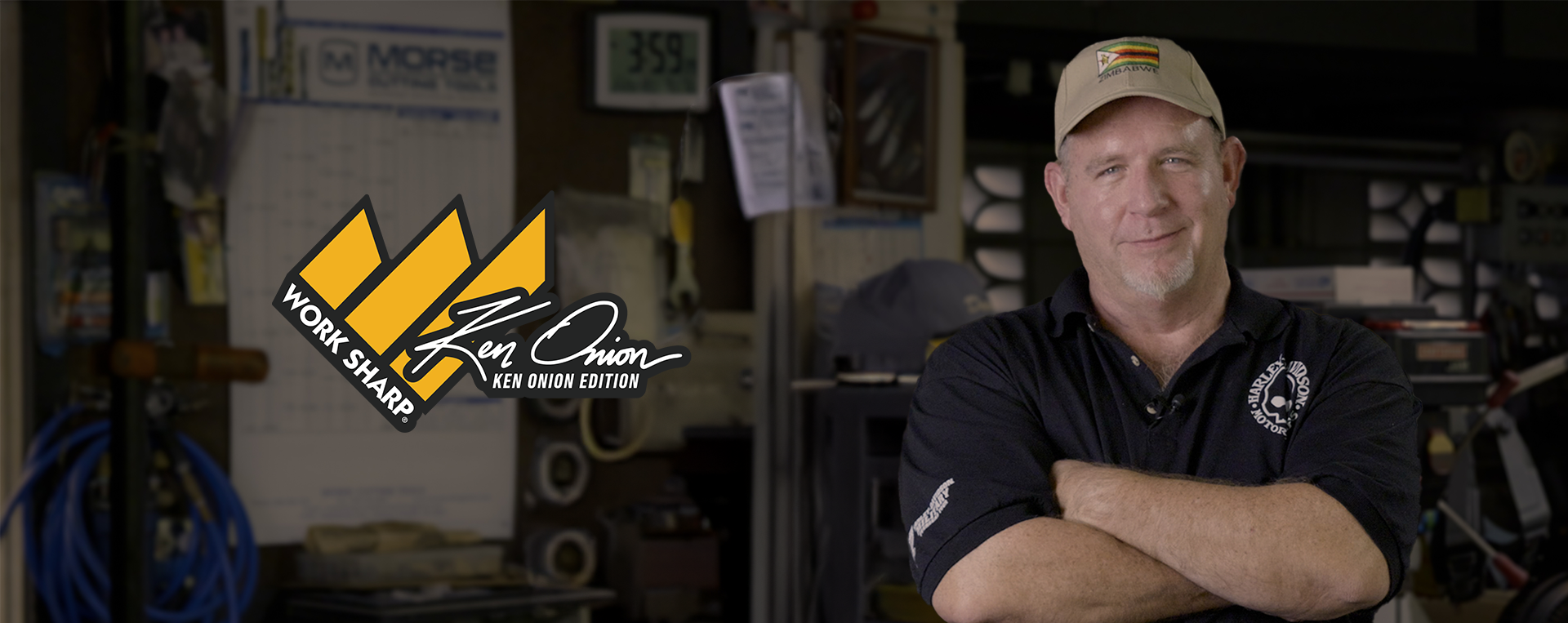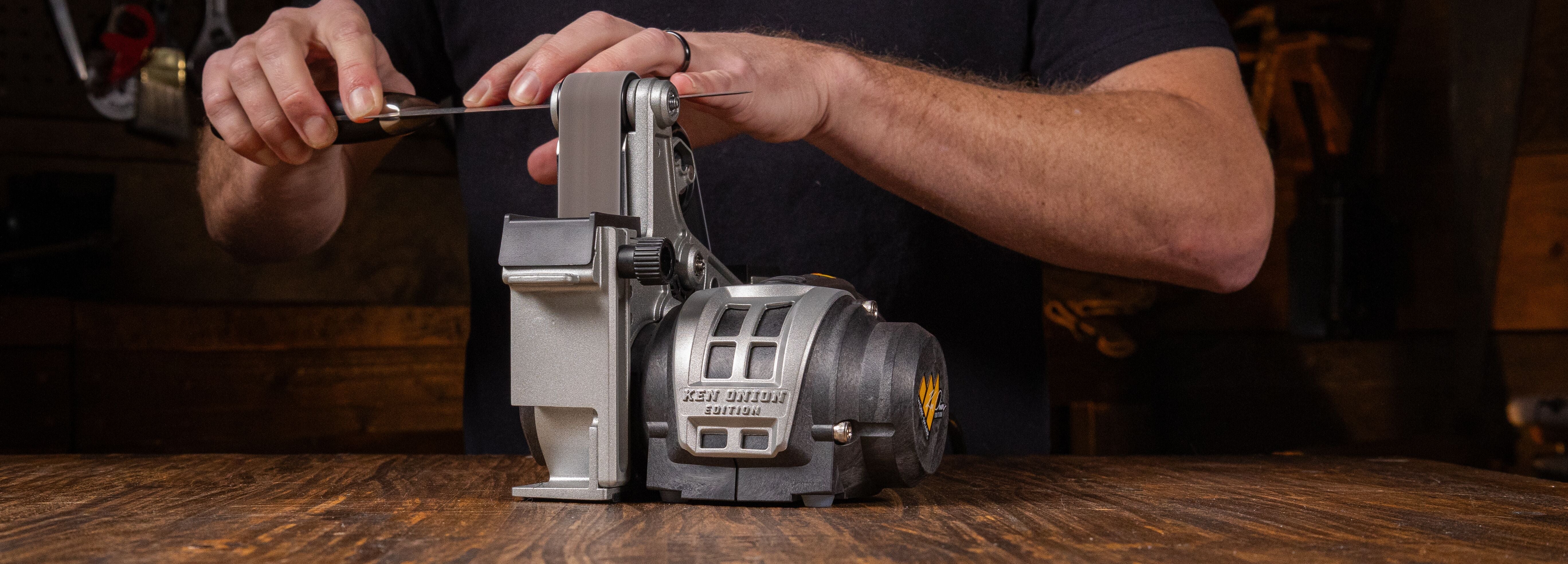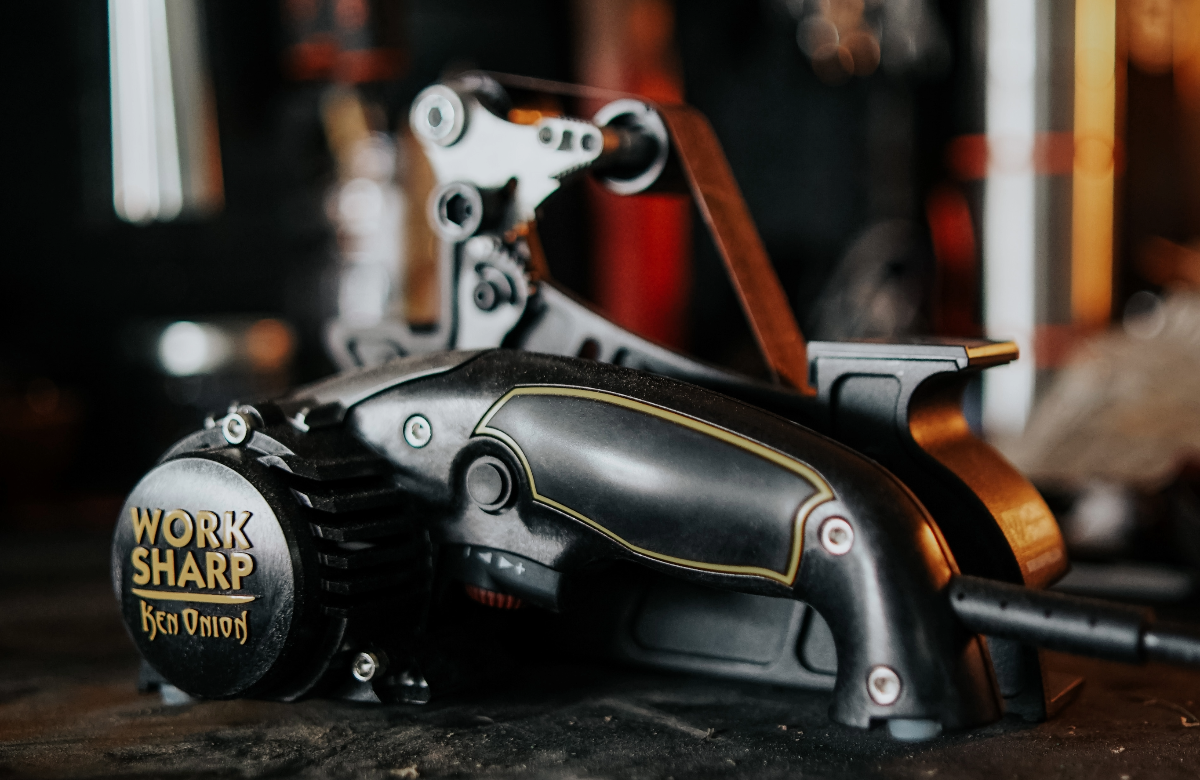Chips can happen when a knife is dropped on a hard surface, the edge is used to cut metal or a stone ridge, or from clattering around unprotected in a knife drawer.

If you care about your knife’s edge and smooth cutting, even small chips introduce drags in slicing and tears when doing fine cutting. A chipped knife can be a real bummer.
Removing a chip from a knife is a more extreme version of sharpening. To get to a chip-free edge, you need to sharpen the edge down to the valley of the chip, which means you’ll be taking more material off than you would in a typical sharpening.

The good news is you already have the shape of the knife to guide your sharpening, so by following the angle and edge of the knife you can run five progressive sharpening passes on each side, repeating this rotation until the chip is gone, without altering the shape of the knife.

Alternating sides every five passes or so is important, because it will give you a centered edge. If you completely sharpen to remove a chip on one side and then completely sharpen the other side, your edge will be sharp but off-center, leading to slightly odd ergonomics.
If the chip is small enough and you’re OK with it, you can gradually sharpen it out over the course of multiple sharpenings to extend the life of your blade. Chip repairs are often convenient times to consider resetting the angle of your blade since you’re already doing the heavy work.


